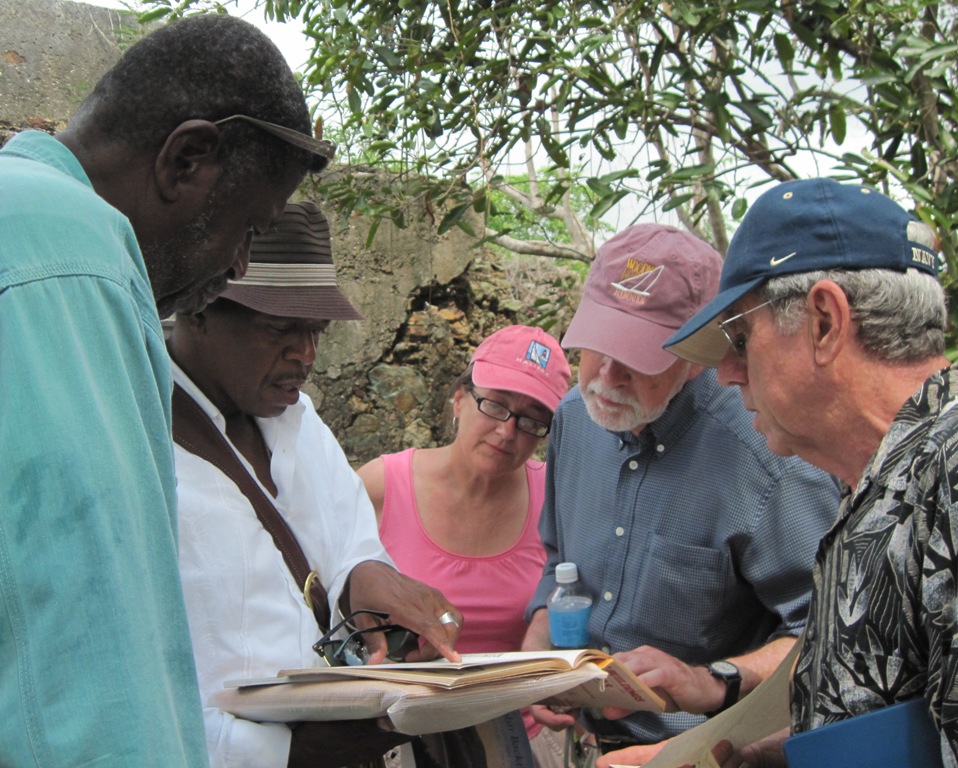
The Monday visit wraps up a week of activities that included stops in San Juan, St. Croix, Hassel Island, and St. John. The members depart Tuesday.
The purpose was to look at historical sites as possible inclusions on the U.N. Educational, Scientific and Cultural Organization – UNESCO for short – World Heritage Site List.
“If the island supports the idea,” added Milagros Flores, the organization’s president and historian at V.I. National Park.
The process is long, but Flores said the local government has encouraged inclusion of V.I. sites on the World Heritage Site List. Additionally, she said that unlike the rest of the sites visited by the group, the Fortsberg site is privately owned. This could have some bearing on the process.
The members were all ears as they listened to retired UVI professor Gilbert Sprauve, V.I. Cultural Institute Director Myron Jackson and St. John historian Chuck Pishko talk about St. John history and the importance of Fortsberg.
“One of our tasks is to get a better understanding,” ICOFORT member David Hansen, a consultant from the state of Washington, said as he hiked the last few yards of the path to the fort.
Fortsberg, located high up on a hill outside Coral Bay, was a key location in the 1733 rebellion by the island’s Africa-born slaves.
“This is sacred ground for us,” Jackson said.
According to Sprauve, the more historians delve into Fortsberg’s history, the more information they find. He said that a “dress rehearsal” for the rebellion happened years earlier on the African Coast when Africans rose up against the Danes.
“They used the same technique of hiding their weapons,” Sprauve said.
Pishko pointed out that the fact that the slaves held the island for six months before the French arrived from Martinique to quell the rebellion speaks to their unity.
The group pored over an old map of the fort that indicated its early dimensions. Jackson said that the walls that stand now were not the original but were constructed when the fort was rebuilt in 1736, three years after the rebellion.
While Fortsberg and other forts in the Virgin Islands were built by the Danes, Flores said that some batteries were built by the British.
U.N. Group Considering Fortsberg as Possible World Weritage Site
Keeping our community informed is our top priority.
If you have a news tip to share, please call or text us at 340-228-8784.
If you have a news tip to share, please call or text us at 340-228-8784.
Support local + independent journalism in the U.S. Virgin Islands
Unlike many news organizations, we haven't put up a paywall – we want to keep our journalism as accessible as we can. Our independent journalism costs time, money and hard work to keep you informed, but we do it because we believe that it matters. We know that informed communities are empowered ones. If you appreciate our reporting and want to help make our future more secure, please consider donating.





